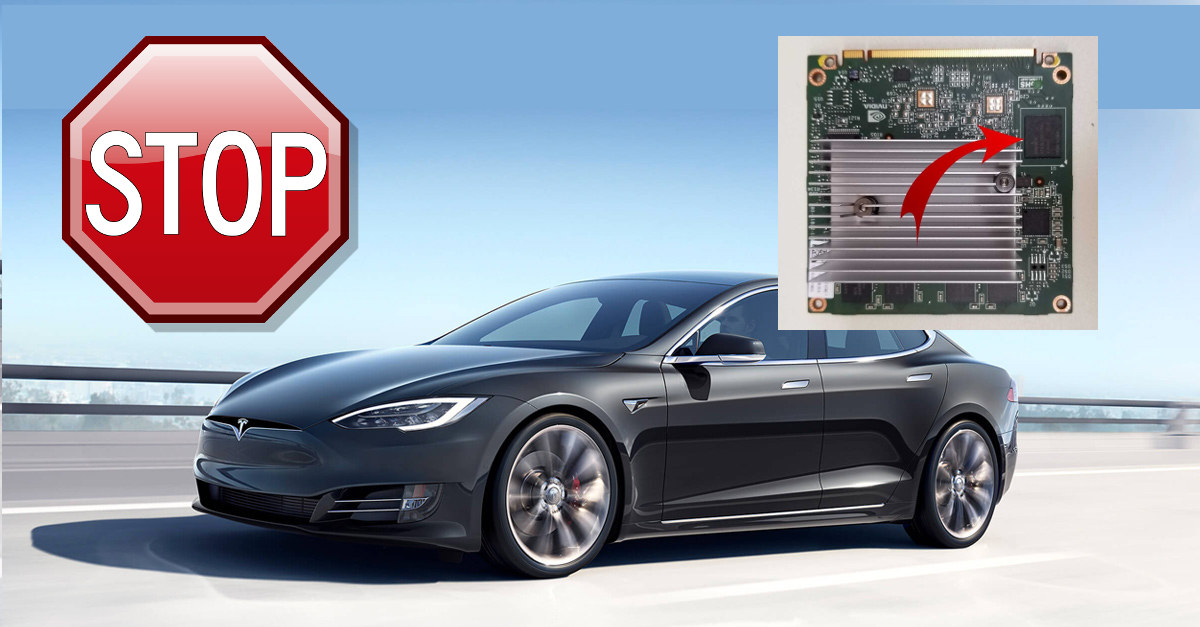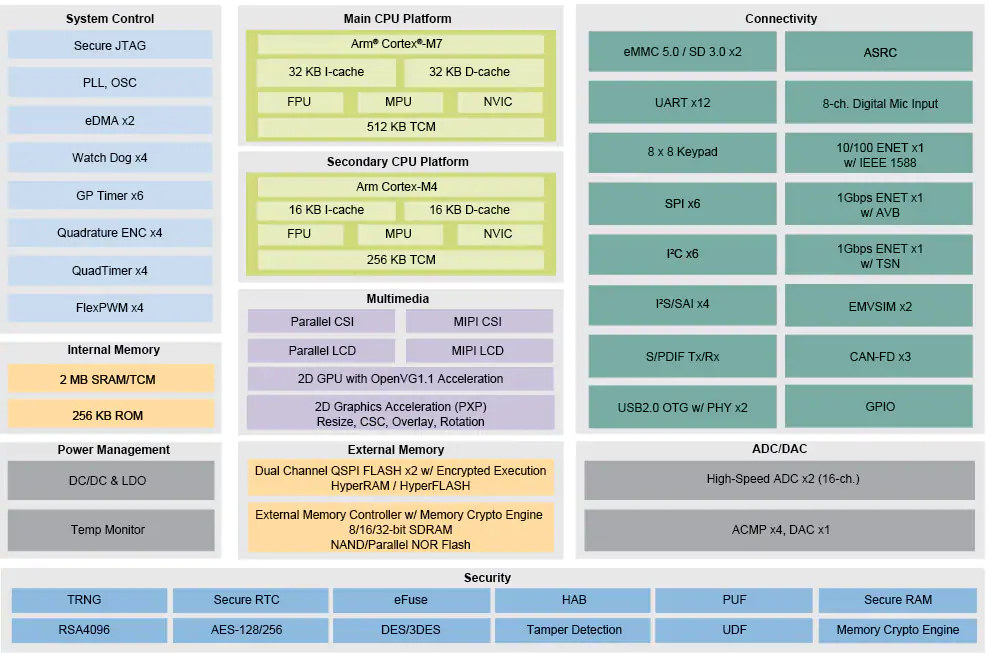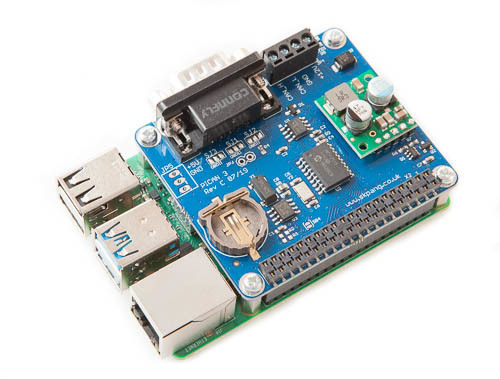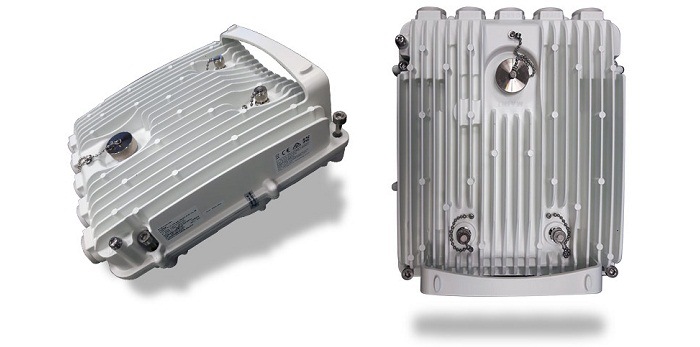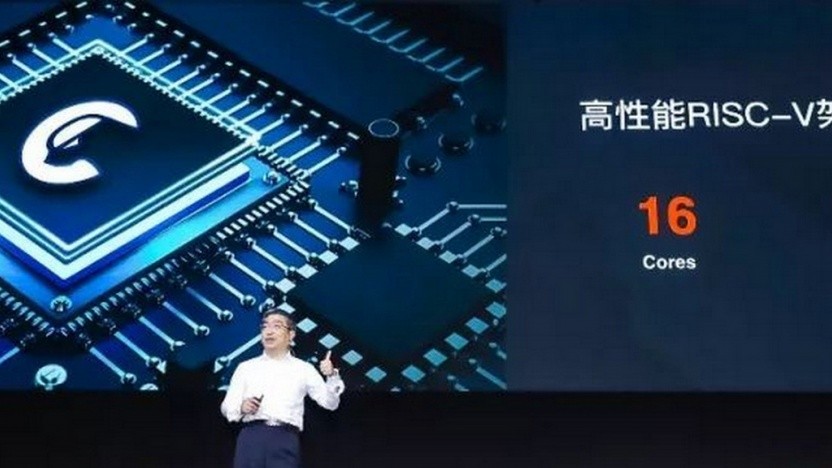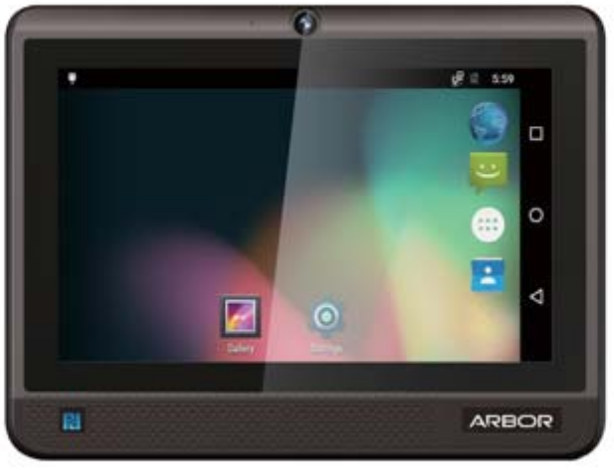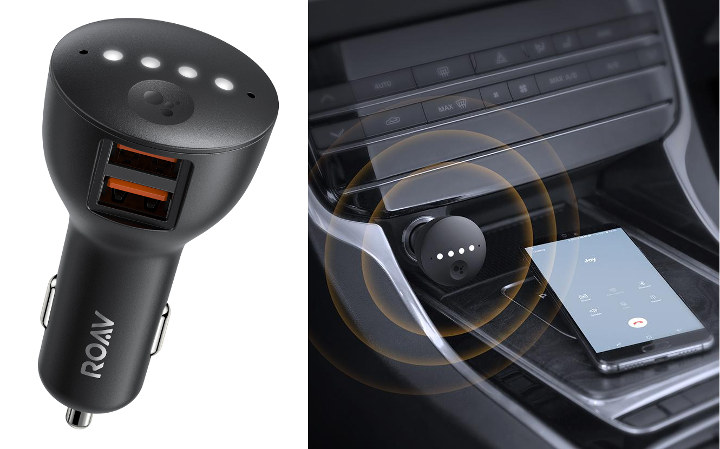Despite wear-leveling techniques, eMMC flash memories tend to wear out over time as they have limited write cycles. So we’ve seen in the past the importance of wear estimation in eMMC flash chips, and methods to limit write operation such as disabling logging when possible or write the log to RAM with log2ram in order to extend the life of flash-based storage devices. My Xiaomi A1 smartphone basically became unusable after a little over a year due to eMMC flash issues, but that was not that big of an issue since I could just get another phone and the most important data is saved in the cloud nowadays. That’s one thing when it happens to a phone, and another when it happens to your car, as some Tesla S & X owners realized when they lost access to the control screen in the car because the eMMC flash was worn […]
NXP i.MX RT1170 Arm Cortex-M7/M4 Microcontroller Clocks at One Gigahertz!
Microcontrollers used to be those cute little things that clock at 8 or 16 MHz, but in the last decade, Cortex-M3/M4 microcontrollers became more powerful with 100 to 200 MHz clocks being quite common. But with the introduction of Arm Cortex-M7 core about 5 years ago, microcontrollers are seriously starting to take over tasks that were previously reserved to faster microprocessors. As I remember it, the MCU frequency “race” started with STMicro STM32H7 in 2016 with an impressive 400 MHz, and NXP i.MX RT crossover processor clocked at 600 MHz a few years later. But with i.MX RT1170 microcontroller, NXP has upped the ante as the new MCU combines an Arm Cortex-M4 core clocked at 400MHz with Arm Cortex-M7 core running at an amazing one Gigahertz (1 GHz). The documentation has not been released and we have limited information, but here’s what we know about NXP i.MX RT1170 key features […]
PiCAN3 Board for the Raspberry Pi 4 adds CAN Capabilities plus a Real-Time Clock
Copperhill Technologies has recently announced the release of its PiCAN3 CAN-Bus Board for the Raspberry Pi 4. The PiCAN3 adds Controller Area Network capabilities plus a real-time clock to the new Raspberry Pi SBC. The Controller Area Network (CAN Bus) is a robust and common industrial communication bus used mostly in the automotive industry. CAN supports long travel distance, medium communication speed, and quite reliable. One of the most significant advantage with CAN-BUS is that it connects any number of ECUs (or microcontrollers) in your car through the two-wire bus, CAN High and CAN Low, reducing the weight of wires that could be gained by using point-to-point communication between ECUs. CAN bus is one of five protocols used in the on-board diagnostics (c)-II vehicle diagnostics standard. Although it is popular in the automotive industry, the Raspberry Pi doesn’t provide an off the shelf support for working with CAN-BUS. Users interested in trying out […]
Aviat WTM 4800 5G Multi-band Radio Targets Transport Applications
Aviat Networks has released the WTM 4800, an eBand and Multi-Band Radio focused on 5G transport applications such as autonomous vehicles, remote healthcare, and industrial machine-to-machine communications, while still being able to work with the 4G network. The radio is structured to work with eBand and Multi-Band, all in one unit, and only needing an antenna to function contrary to the usual 2 or 3 radio unit systems. This is the industry’s first and only single box design for a multi-band 5G transport application solution. The unit is said to reduce the total cost of ownership (TCO) significantly. The WTM 4800 does not need an indoor interface for the user as with other solutions, which need to be configured, maintained and installed in a complex series of steps. The WTM is less complicated, easily configured over the cloud and scalable for nearly any type of transportation application needing radio connection. […]
Alibaba Unveils XuanTie 910 16-core RISC-V Processor
When Pingtou Ge (Brother Pingtou) Semiconductor Co. was founded by Alibaba in September 2018, the vision was to create groundbreaking chips for production. The company had once been Zhongtianwei, a chip company, which was acquired by Alibaba in April 2018 along with team Aha. On July 25, 2019, it was announced that Brother Pingtou had released the XuanTie 910 (Black Iron 910) 16-Core RISC-V Processor. The company has reported that the processor will be integrated into high-performance end to end 5G chips, AI, and autonomous driving applications. There are conflicting reports that the processor is also known as T-Head, although its name means Black Iron. There has been no firm release date or price as of yet. Open-source technologies are being adopted on a regular basis in China, and the XuanTie 910 is being offered to developers with encouragement to use Berkeley-based open-source ISA with very few intellectual property restrictions. […]
Embedded Linux Conference & Open Source Summit 2019 Schedule
In the last few years, I covered the Embedded Linux Conference and IoT Summit schedules since both were happening at the same time and in the same location. But the Linux Foundation have recently announced the Embedded Linux Conference will combine with the Open Source Summit, so the IoT Summit appears to have been phased out. The full schedule for the events taking place on August 21 – 23, 2019 at the Hilton San Diego Bayfront, USA, has also been released, so I’ll create a virtual schedule with some of the sessions most relevant to this blog. Wednesday August 21, 2019 11:30 – 12:05 – What’s New with U-Boot? by Simon Glass, Google LLC U-Boot is a widely used bootloader in embedded systems. Many users are unaware of the wide feature-set of U-Boot, particularly features added in the last few years. This talk aims to bring users (and prospective users) […]
ARBOR IoT-800N Android/Ubuntu Panel PC Targets Automotive Applications, Industrial Automation
Rockchip PX30 is a low cost low power quad core Arm Cortex-A35 processor mostly designed for car infotainment systems. Last month, we also found the processor in ARBOR SOM-RP301 system-on-module designed for retails kiosks such as automated currency exchange machines, electronic restaurant menus, , ticketing kiosks, etc… ARBOR has now launched another Rockchip PX30 platform with their IoT-800N 8″ Panel PC running Android 8.1 or Ubuntu 16.04, and designed for automotive applications such as fleet management or driver fatigue monitoring thanks to interfaces like OBD-II, as well as industrial automation. ARBOR IoT-800N specifications: SoC – Rockchip PX30 Quad-core Arm Cortex-A35 processor System Memory – 2GB DDR4 memory soldered on board Storage – 16GB eMMC flash soldered on board, microSDHC/microSDXC/microSD card socket up to 128GB Display – 8” TFT LCD display with 1024 x 600 resolution, 5-point projected capacitive touchscreen Camera – 8MP front-facing MIPI CSI camera with auto-focus Audio – […]
$50 Anker Roav Bolt Car Charger is Optimized for Google Assistant
While it may be tempting to check your messages, make phone calls or checking something on your smartphone while driving, it’s never a good idea. But thanks to Anker Roav Bolt car charger with built-in Bluetooth connectivity and a microphone array, you can perform those tasks through Google Assistant while keeping your eyes on the road. Anker Roav Bolt key features and specifications: Voice Chip – Far-Field Voice Processor Audio 2x MEMS Microphones 3.5mm audio jack Noise cancellation, acoustic echo cancellation Connectivity – Bluetooth 4.2 Misc – 1x physical button used to trigger GVA (Google Voice Assistant), 4x RGB LED Power Input – 12V-24V cigarette lighter sockets USB Output – 24W, 5V/2.4A max per port, Anker PowerIQ Technology So you get to charge your phone, while it is connected to your car audio system over Bluetooth or the audio jack, and make calls, start listening to a podcast, or ask […]


